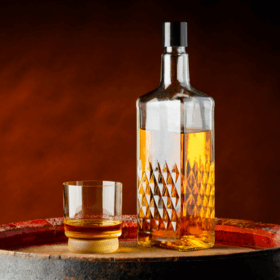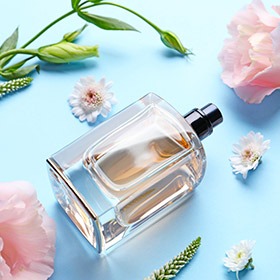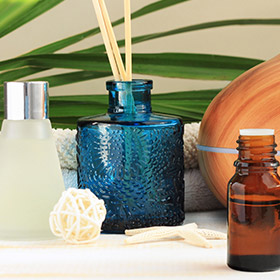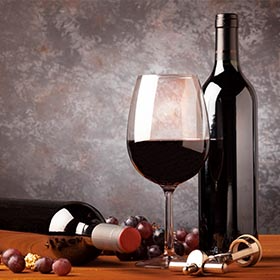Introduction
Choosing the right and suitable size of wine bottle for your brand is not just a game—it is an essential business strategy. The wrong choice may even jeopardize the entire brand empire. As we all know, wine is one of the oldest and most celebrated beverages in human history, and the right wine bottle has always played a crucial role in preserving quality and shaping consumer perception. A glass wine container not only safeguards the liquid inside but also communicates a brand’s identity.
For glass wine bottle retailers, wholesalers, and distributors who require bottles for packaging, a deep understanding of the nuances of different wine bottle sizes—and their impact on storage, logistics, and branding—is essential.
This article explores the complete spectrum of wine bottle sizes and will guide businesses that need wine bottles wholesale for packaging in choosing the perfect option.
Why Wine Bottle Size Matters in the Industry

The size of a wine bottle is more than just a measure of its capacity; it profoundly influences wine production, storage, transportation, sales, and ultimately, the tasting experience. For glass wine bottle manufacturers, distributors, and retailers, understanding these impacts is crucial. Different bottle sizes dictate warehouse space utilization, transportation cost calculations, shelf presence in retail environments, and units can be shipped per pallet or stored per rack.
Furthermore, consumer perception of wine bottle size also influences purchasing decisions. Larger capacity bottles are often associated with special occasions or collector’s value, while smaller bottles are more suitable for individual consumption or travel. Therefore, accurately grasping market demand and offering a diverse range of bottle sizes is a key strategy to satisfy different consumer segments and expand market share. Concurrently, bottle size is also closely related to the wine’s aging potential; larger bottles typically provide a more stable storage environment for wine, aiding its slow and elegant flavor development.
The Quintessential Standard: The 750ml Wine Bottle
Dimensions and Characteristics
While the 750ml capacity is consistent, the physical dimensions and shapes can vary, primarily influenced by the wine region or style. Common shapes include:
Bordeaux Bottle: Tall with straight sides and distinct shoulders, typically used for Cabernet Sauvignon, Merlot, and Sauvignon Blanc. Dimensions generally range from 11.5 to 13 inches in height and 2.75 to 3.25 inches in diameter.
Burgundy Bottle: Characterized by sloping shoulders and a wider base, commonly used for Pinot Noir and Chardonnay. These bottles are usually 11.25 to 12.25 inches tall and 3 to 3.75 inches in diameter.
Champagne Bottle: Similar to Burgundy bottles but with thicker glass and a deeper punt (indentation at the base) to withstand the pressure of sparkling wines. They are typically around 12.5 inches tall and 3.5 inches in diameter.
Hock/Alsace Bottle: Tall and slender with a gentle slope from the neck to the base, often used for Riesling and other German or Alsatian white wines.
Industry Dominance
The 750ml bottle’s dominance stems from a combination of historical factors, regulatory standards, and practical advantages. Its size aligned conveniently with older imperial and metric measurements, easing international commerce. 750ml is ideal for single-occasion consumption among a small group, striking a balance between offering enough wine without excessive waste. This standardization has facilitated international trade, as consumers and distributors globally recognize and expect this volume. Nearly every wine rack, wine glass container, and retail display is engineered around this size, making it the most versatile option for producers and distributors alike. For wine container and glass wine bottle producers, focusing on this standard allows for economies of scale, optimizing production lines and reducing costs.
Practical Implications
For wine bottle retailers and wine bottle wholesalers, the 750ml format streamlines inventory management and display. Most wine racks and storage solutions are designed to accommodate this size, making it easy to stock and present. From a consumer perspective, the familiarity of the 750ml bottle simplifies purchasing decisions and provides a consistent reference point for value and quantity. Pallet loads and shipping cartons are optimized for the 750ml format. This consistency also extends to the wine industry’s regulatory frameworks, which often use the 750ml bottle as a basis for taxation and labeling, further solidifying its status as the quintessential standard.
Exploring Smaller Wine Bottle Formats
Piccolo/Split (187ml)
The Piccolo, also known as a Split or Quarter bottle(one-quarter of a standard 750ml bottle), typically holds 187ml of wine, which is equivalent to a single glass. These mini wine bottles bulk options are particularly popular for sparkling wines and Champagne, allowing for individual servings without opening a larger bottle. They generally stand about 7.5 inches tall with a diameter of approximately 2.375 inches. For empty wine bottles suppliers, these small formats represent a growing market for single-serve convenience, weddings and event favors.
Demi/Half (375ml)
The Demi, or Half bottle, contains 375ml of wine, roughly two glasses or half a standard 750ml bottle. These 375 ml wine bottles are often used for dessert wines, fortified wines, or for consumers who prefer to enjoy a smaller quantity. Demi bottles are usually around 9.5 inches tall and 2.25 to 2.375 inches in diameter. Their size offers a good balance between portion control and a more substantial serving than a Piccolo.
These smaller formats highlight the versatility of wine container options and the importance of offering a diverse product range to meet varied consumer needs. For wine bottle manufacturers, producing these sizes requires precision and efficiency to maintain cost-effectiveness.
Delving into Larger Wine Bottle Formats
Larger bottles carry both prestige and practicality for aging. Below are the most common and specialty sizes:
Magnum (1.5L)
The Magnum, holding 1.5 liters (equivalent to two standard 750ml bottles), is perhaps the most common and widely recognized large format. Its popularity stems from the belief that wine ages more gracefully in a Magnum due to a more favorable wine-to-air ratio, leading to slower oxidation and more complex flavor development. Magnums are a popular choice for special events and gifting. Their dimensions are typically around 14 inches tall with a diameter of about 4 inches.
Jeroboam (3L for sparkling, 4.5L for still)
The Jeroboam is a significant leap in size, with its capacity varying depending on whether it holds sparkling or still wine. For sparkling wines, a Jeroboam holds 3 liters (four standard bottles), while for still wines, it holds 4.5 liters (six standard bottles). These bottles are often used for grand celebrations and can be a centerpiece at events. The sheer volume makes them a statement piece, and their size contributes to extended aging potential.
Rehoboam (4.5L for sparkling)
Specifically for sparkling wines, the Rehoboam holds 4.5 liters, equivalent to six standard Champagne bottles. Like other large formats, it is designed for grand occasions and offers excellent aging conditions for effervescent wines.
Specialty Sizes (Uncommon Bottles)
Beyond these, there’s a fascinating hierarchy of even larger, often rare, and highly collectible wine bottle sizes, many named after biblical kings.
Methuselah (6L): Equivalent to standard 8 bottles.
Salmanazar (9L): Equal to standard 12 bottles.
Balthazar (12L): Equivalent to standard 16 bottles.
Nebuchadnezzar (15L): Holds 20 standard bottles.
Melchior (18L): Capacity of 24 standard bottles.
Solomon (20L): Approximately 26.6 standard bottles.
Sovereign (26.25L): Rare, with capacity equal to 35 standard bottles.
Primat (27L): Equivalent to 36 standard bottles.
Melchizedek (30L): Equal to 40 standard bottles; extremely rare and prestigious.
These giant bottles, while not practical for everyday consumption, serve as powerful marketing tools and symbols of prestige. They are often sought after by collectors and used for grand displays, showcasing the versatility and artistry of wine bottle glass and glass wine bottle production.
Logistics, Storage, and Wine Racks for Different Sizes
Storage and Logistics
Standard 750ml bottles are typically designed for efficient stacking and storage in conventional wine racks and pallets. However, the introduction of mini wine bottles and especially the larger formats like Magnums and Jeroboams, necessitates specialized storage solutions. Warehouses must account for varying bottle heights and diameters, which can impact the number of bottles that can be stored per square foot. Small wine bottles like 187ml splits maximize pallet density, reducing shipping costs.
Market Demand and Consumer Preference
Analyzing trends in bottle size popularity is vital for inventory planning. While the 750ml remains the workhorse, there’s a growing demand for smaller formats driven by single-serve convenience and health-conscious consumers. Magnums and Jeroboams are trending in luxury markets and fine dining. Retailers must balance stocking a wide variety of sizes to meet diverse consumer preferences with the practicalities of storage and display. The availability of bulk wine bottles in various sizes from wine bottle suppliers plays a key role in meeting these demands.
Customization and Branding
Bottle size and shape are integral to a brand’s identity and shelf appeal. A distinctive bottle can differentiate a wine in a crowded market. For example, a uniquely shaped black wine bottles or green glass wine bottle can instantly catch a consumer’s eye. Custom wine bottles and personalized wine bottles allow wineries to create a unique visual identity that resonates with their target audience. This extends beyond just the label; the tactile experience and visual impact of the bottle itself contribute to the overall brand perception.
The Impact of Size on Wine Quality and Aging
Oxygen Exposure
In larger bottles, such as Magnums, the volume of wine is significantly greater relative to the amount of air trapped between the cork and the wine (the ullage). Reduced oxygen exposure leads to a slower, more gradual oxidation process, allowing the wine to age more gracefully and develop complex flavors and aromas over a longer period. This is why many connoisseurs prefer to age their premium red wine bottles in larger formats.
Temperature Stability
Larger wine bottles also offer superior temperature stability. A greater volume of liquid takes longer to heat up or cool down, providing a more consistent internal temperature for the wine. This thermal inertia is crucial for long-term aging, as fluctuating temperatures can accelerate undesirable chemical reactions and negatively impact the wine’s development. In environments where temperature control might be less precise, larger bottles act as a buffer, protecting the wine from rapid changes that could compromise its quality. This makes them an excellent choice for wines intended for extended cellaring.
Cork and Closure Considerations
While not directly a function of bottle size, the choice and quality of the cork or closure are paramount for aging. The larger the bottle, the more critical the integrity of the seal becomes to maintain the optimal aging environment. For empty wine bottles and bulk wine bottles destined for long-term aging, selecting high-quality corks that provide a consistent, slow ingress of oxygen is essential. The interaction between the wine, the cork, and the minimal oxygen ingress is a delicate balance that contributes to the wine’s evolution. Manufacturers of wine bottle glass must ensure that the bottle neck and opening are perfectly suited for various closure types to guarantee a secure and effective seal.
Roetell Glass: Your Trusted Wine Bottle Manufacturer
As a leading wine bottle manufacturer, Roetell Glass understands the importance of wine bottles’ quality. With years of expertise in crafting high-quality empty glass wine bottles, we are committed to providing solutions that meet the diverse demands of the global market. Our extensive range includes standard 750ml bottles, various red wine bottles, and specialized options like black wine bottles, unique wine bottles, mini wine bottles, and large format bottles, ensuring that every client finds the perfect wine container for their product.
At Roetell Glass, we have the ability to produce custom wine bottles that reflect the unique identity of your brand. Whether you require specific dimensions, distinctive shapes, or a particular shade of colored wine bottles, our advanced manufacturing capabilities allow for unparalleled customization. We utilize state-of-the-art technology to ensure precision, durability, and aesthetic appeal in every wine glass bottle we produce. Our commitment to quality extends to offering bulk wine bottles and mini wine bottles in bulk for clients with high-volume needs, ensuring competitive pricing without compromising on excellence.
We are more than just wine bottle suppliers; we are partners in your success. Our deep understanding of the industry, coupled with our dedication to innovation, makes us the preferred choice for those seeking reliable and high-quality wine bottles wholesale. From the initial design concept to the final delivery, Roetell Glass ensures a seamless process, providing exceptional products that enhance your wine’s presentation and preserve its quality. Choose Roetell Glass for your wine bottle needs and experience the difference that comes with working with a trusted industry leader.
Conclusion
Wine bottle sizes reflect centuries of tradition, evolving consumer habits, and practical needs of the global wine trade. From small wine bottles like 187ml splits to monumental collector bottles like the 30L Melchizedek, each size serves a unique purpose in distribution, storage, and branding.
For wholesalers, distributors, and retailers, understanding these dimensions is essential to meeting customer expectations, optimizing logistics, and enhancing brand positioning.
Whether your business requires 750 ml wine bottles, personalized wine bottles, or empty wine bottles for sale in bulk, choosing the right wine bottle suppliers is crucial. With a proven track record in delivering high-quality glass wine bottles worldwide, Roetell Glass stands as a trusted partner in helping your brand succeed.











